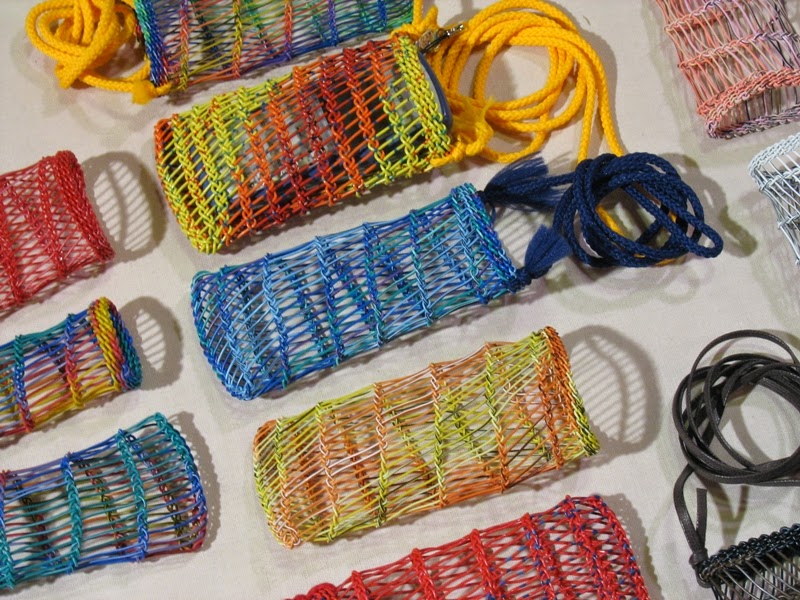 |
| Burkina |
Olen oppinut punontatekniikan tanskalaiselta Eva Seidenfadenilta 2005. Burkinalla on taustansa Burkina Fasossa ja Välimeren maissa.
Evan kurssilla käytettiin pajua ja opeteltiin pyöreän korin punominen. Suppilokori, pussikori ja tasopunonta ovat kuitenkin kiinnostaneet enemmän.
I will tell and show how I have been working with Burkina weave. Eva Seidenfaden taught this technique to me in 2005. Burkina weave is based on basketry in Burkina Faso and the Mediterannean.
On Eva's course we used willow and learned how to make a round basket. I have been even more interested in shapes of funnels, pouches and flat weaves.
Many other materials started to tempt me after Eva's course. I experimented with rush, pine roots, grasses etc. Burkina weave still works as an experiment technique to find out if a material is suitable for basketry weaving.
Vähitellen kuitenkin huomasin punovani burkinaa yhä enemmän piuhoista, muovipäällysteisistä metallilangoista, joita purin ja puran tietoverkkokaapeleista. Pussimuodosta eri kokoisina versioina tuli suosikkini.
I although noticed little by little that I use more and more plastic covered wire, which I take out of thicker internet cables. The pouch shape in various sizes became my favorite.
Paperilangat soveltuvat erinomaisesti burkinaan. Paperyarns are excellent for Burkina weave.

Töiden kuvaaminenkin on tärkeää. Se on osa prosessia. On hauska etsiä kameran linssin läpi uusia puolia tuotteesta. Se on leikkiä.
Taking photos of my work - it is also important. It is a part of the process. It's fun to look for new views, new sides of the object with your camera. It is a play.































